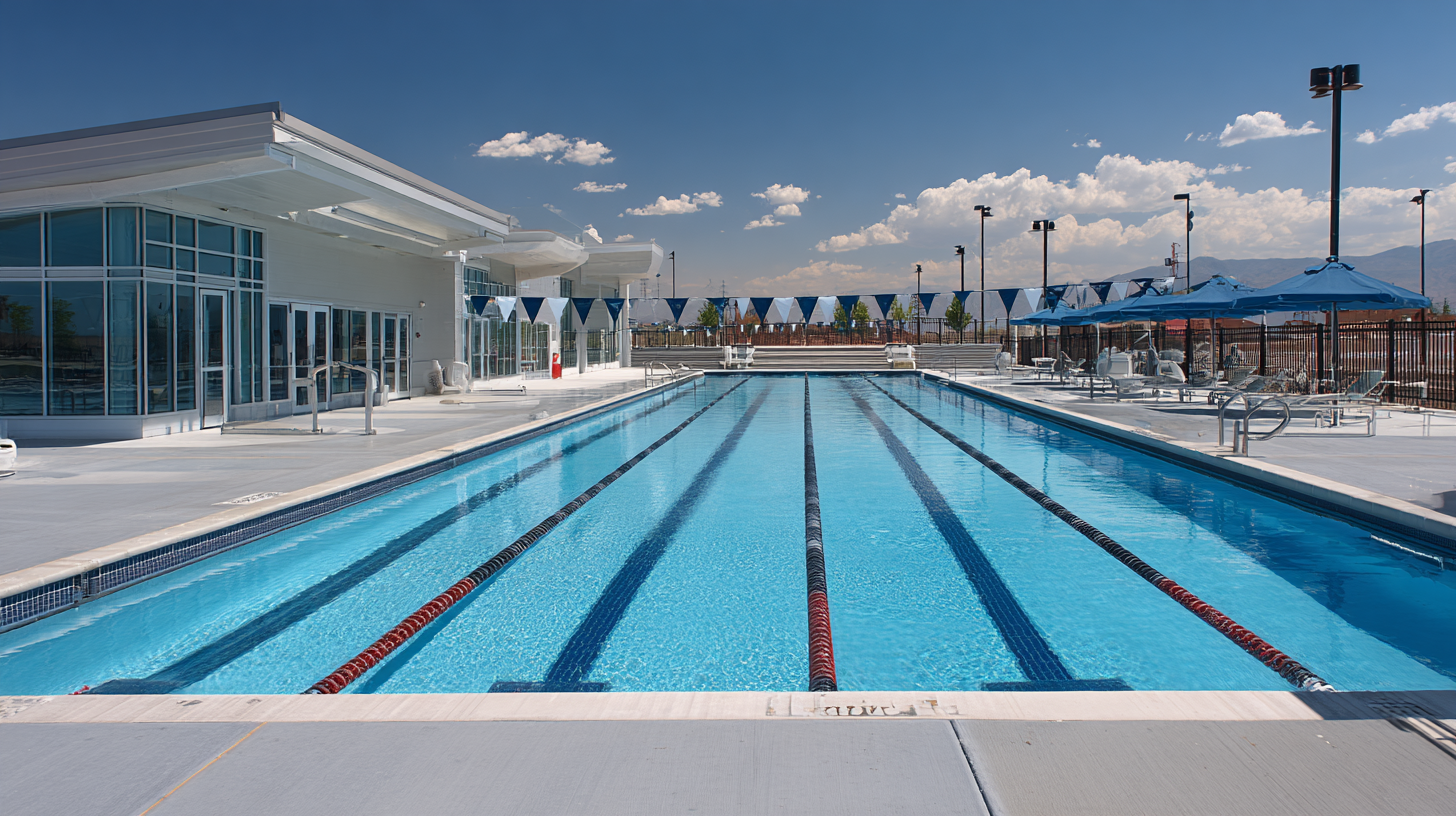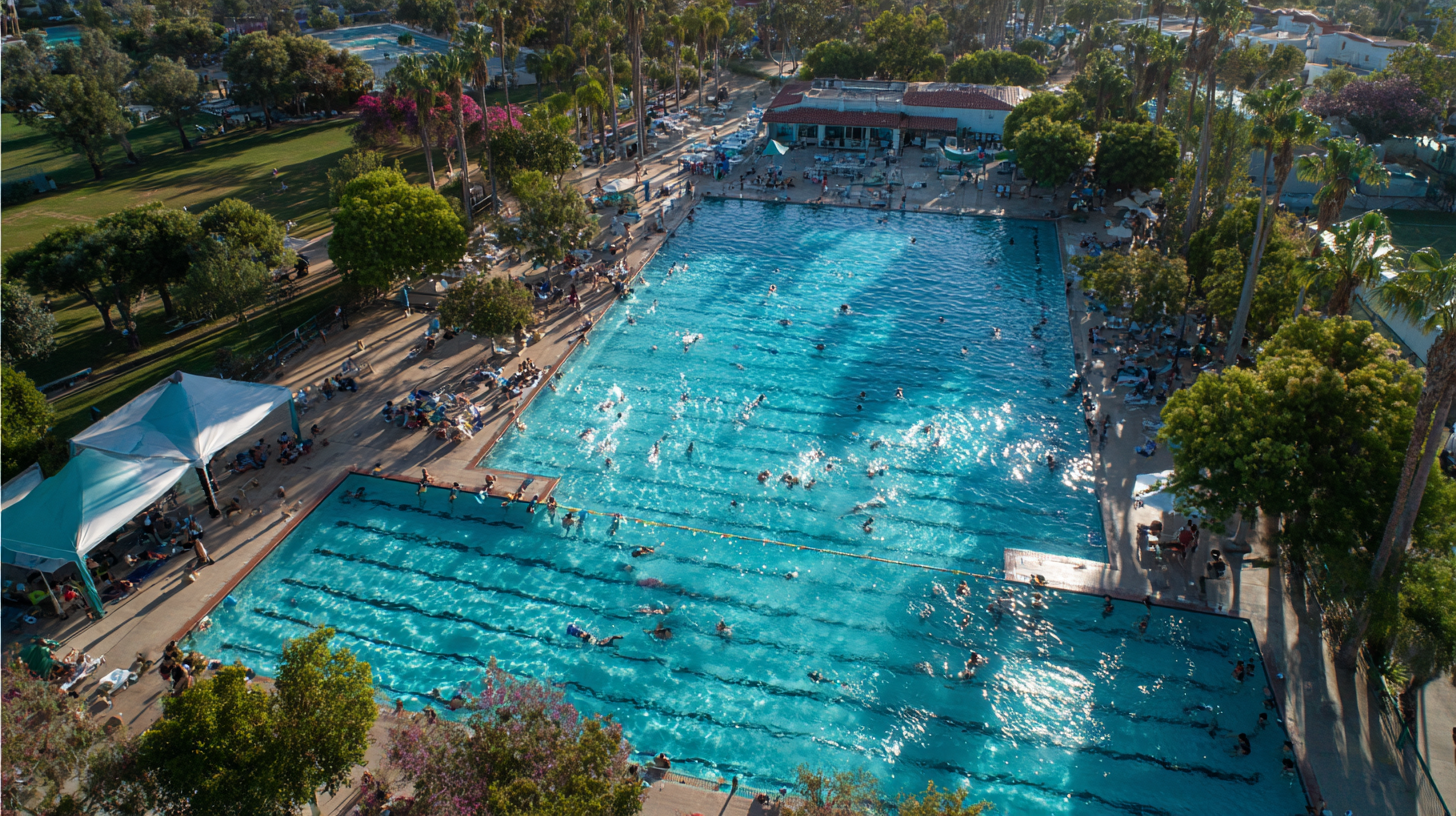The Benefits of Using Public Pools for Community Health and Wellness
 Public pools serve as vital communal resources that promote health and wellness within communities. According to the Centers for Disease Control and Prevention (CDC), regular access to aquatic environments can significantly enhance physical activity levels, with swimming being one of the most recommended forms of exercise for all ages. A report by the National Recreation and Park Association indicates that nearly 80% of Americans believe that having access to public pools improves their quality of life and encourages healthier lifestyle choices. Furthermore, community public pools provide essential social interaction opportunities and foster a sense of belonging, which are critical components of mental health. By leveraging the benefits of public pools, communities can effectively address public health challenges, combat sedentary habits, and create inclusive environments that encourage collective well-being.
Public pools serve as vital communal resources that promote health and wellness within communities. According to the Centers for Disease Control and Prevention (CDC), regular access to aquatic environments can significantly enhance physical activity levels, with swimming being one of the most recommended forms of exercise for all ages. A report by the National Recreation and Park Association indicates that nearly 80% of Americans believe that having access to public pools improves their quality of life and encourages healthier lifestyle choices. Furthermore, community public pools provide essential social interaction opportunities and foster a sense of belonging, which are critical components of mental health. By leveraging the benefits of public pools, communities can effectively address public health challenges, combat sedentary habits, and create inclusive environments that encourage collective well-being.
The Role of Public Pools in Promoting Physical Activity and Reducing Sedentary Lifestyles
Public pools serve as vital community resources that play a significant role in promoting physical activity and countering sedentary lifestyles. As studies indicate, a substantial proportion of adults globally—approximately 31%—are not engaging in sufficient physical exercise, leading to increased health risks. By providing a communal space for swimming and other aquatic activities, public pools encourage people of all ages to participate in physical exercise, thereby fostering a more active lifestyle.

Moreover, public pools can be particularly beneficial for children, as emphasized by the World Health Organization, which advocates for reduced sedentary time among young ones to support healthy growth. Engaging in water-based activities not only keeps children active but also enhances their social skills and boosts their overall well-being. Given the rising concern over prolonged sitting and its associated health risks, facilities like public pools can help redirect lifestyle choices towards more active engagement, thereby improving community health outcomes.
Community Engagement: How Public Pools Foster Social Connections and Support Networks
Public pools serve as valuable community hubs that go beyond mere recreational facilities. They facilitate social connections by providing a shared space where people of various backgrounds can come together. This interaction fosters a sense of belonging and can lead to the creation of support networks that enhance overall community well-being. Families gather, friends reconnect, and new friendships are formed, all within the welcoming confines of a public pool.
Moreover, these interactions can stimulate community engagement in broader initiatives, such as promoting health and wellness programs. When individuals come together for swimming classes, water aerobics, or swim teams, they not only improve their physical health but also cultivate camaraderie. This communal atmosphere encourages active participation in health-related discussions and can inspire collective action towards improving local health resources. Public pools, therefore, play a crucial role in bridging gaps, encouraging collaboration, and building social bonds that transcend individual concerns, contributing significantly to community resilience and solidarity.
The Benefits of Using Public Pools for Community Health and Wellness
| Benefits | Description | Community Impact | Health Benefits |
|---|---|---|---|
| Social Connections | Public pools provide a space for people to meet and bond over shared activities. | Increases community cohesion and networking. | Enhances overall mental health through social interaction. |
| Physical Activity | Swimming offers a fun way to engage in aerobic exercise. | Promotes a more active lifestyle within the community. | Improves cardiovascular health and overall fitness levels. |
| Accessibility | Public pools often have low-cost entry or free access for residents. | Ensures that all community members can participate, regardless of income. | Encourages healthy habits among diverse populations. |
| Family Bonding | Pools allow families to spend quality time together in a recreational setting. | Strengthens family relationships and community ties. | Promotes physical activity for all family members. |
| Skill Development | Public pools often provide swimming lessons and safety training. | Encourages learning and development within the community. | Fosters life-saving skills, contributing to overall safety. |
Economic Benefits of Public Pools in Enhancing Local Health Services and Reducing Healthcare Costs
Public pools serve as vital community assets that go beyond recreation, significantly impacting local health services and reducing healthcare costs. According to a recent study, access to public pools contributes to increased physical activity levels, which can reduce obesity rates and associated health conditions. For example, a report by the Centers for Disease Control and Prevention (CDC) indicates that communities with accessible recreational facilities, including swimming pools, experience a 25% increase in physical activity among residents, thereby decreasing the incidence of chronic diseases and related healthcare expenses.
Moreover, the economic implications of public pools extend into healthcare spending. Research shows that for every dollar spent on public health initiatives like water-based recreation, communities can save up to $5 in healthcare costs due to reduced hospital visits and improved overall health. As healthcare economics shift towards preventive care and non-acute service delivery, investing in facilities that promote physical activity, such as public pools, can lead to substantial long-term savings in healthcare costs and improve community health outcomes. Data from various health studies suggest that communities with robust public health infrastructures see lower rates of emergency room visits, leading to additional cost reductions for local health services.
The Economic Benefits of Public Pools on Community Health
Public Pools as Safe Spaces for All Ages: Inclusivity and Accessibility in Community Health
Public pools are more than just places to swim; they serve as vital safe spaces that promote inclusivity and accessibility for community members of all ages. By providing a welcoming environment, public pools encourage family bonding, social interaction, and physical activity. Individuals from diverse backgrounds can gather to enjoy recreational activities, breaking down barriers and fostering a sense of belonging. The open layout of these facilities allows for easy navigation, ensuring that everyone, including those with disabilities, can participate in the joy of swimming and other water-related activities.
Moreover, public pools offer programming tailored to varied needs, such as swim lessons for children, aqua aerobics for seniors, and open swim sessions for individuals of all ages. These programs help build confidence and skills among participants, contributing to improved health outcomes. By prioritizing inclusivity, public pools play a crucial role in promoting community health and wellness, enabling individuals to engage in physical exercise while also nurturing social connections. This multifaceted approach not only enhances individual well-being but also strengthens the community as a whole.
Educational Programs at Public Pools: Teaching Water Safety and Lifelong Skills for Wellness
Public pools serve as essential hubs for fostering community health and wellness, particularly through their educational programs. These programs not only promote water safety but also teach vital skills that can lead to lifelong wellness habits. By participating in lessons that cover swimming techniques and water safety protocols, individuals of all ages can gain confidence in the water. Such skills are crucial, as they not only enhance personal safety but also encourage more people to engage in aquatic recreation, thus benefiting overall public health.

Tips for maximizing water safety education at public pools include starting young—enroll children in swimming classes as early as possible. It's also beneficial to regularly refresh knowledge with courses on CPR and first aid, as these skills can be lifesaving. Community workshops that focus on drowning prevention and safety awareness can further empower participants to share their knowledge, helping to create a culture of safety around water activities. By integrating these educational components, public pools can significantly contribute to the wellness of the entire community.
